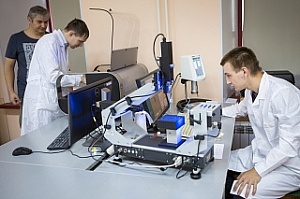Employees of the Laboratory of Organic Electronics (SPhTI TSU) are testing ink on the basis of organic semiconductors designed for printer print of computer displays and other digital electronics. The world leaders of organic electronics devices - Samsung, Pioneer, and Sony are using this technology. In Russia, the printer print is not used. The project of TSU researchers must fill this gap and provide domestic production with this breakthrough technology.
- Organic printed electronics will help to create cheap electronic devices on flexible substrates, while their size can be arbitrary, - said Tatiana Kopylova, Head of the Laboratory of Organic Electronics.
A few years ago, researchers have taken the first important step on the path to success. They have mastered the contact method of applying ink droplets with plotter printing. The method is based on a similar principle, in which much less the requirements for the parameters of ink. One of the major disadvantages of this technology is extremely low printing speed.
- We already have learned how to print small-sized monochrome displays, which emit blue, green, and red, - says Ruslan Gadirov, a leading researcher at the Laboratory of Organic Electronics. - At the present time, we are faced with a difficult task - how to create inks based on organic semiconductors, which are synthesized by chemists for us, and to develop a technology of inkjet printing for full-color display devices.
To do this at the beginning of 2016 the Laboratory of Organic Electronics with the help of the university was purchased new equipment - a viscometer, capable of measuring the viscosity of the functional solutions, system for measuring the contact angle and surface tension of the liquid and the printer. Its print speed is significantly higher than plotter print because this printer has many nozzles, through which there is a continuous supply of ink. The main technical difficulty is to achieve the same droplet size.
The researchers plan to get the first samples of the printed organic electronics at the end of 2016.

